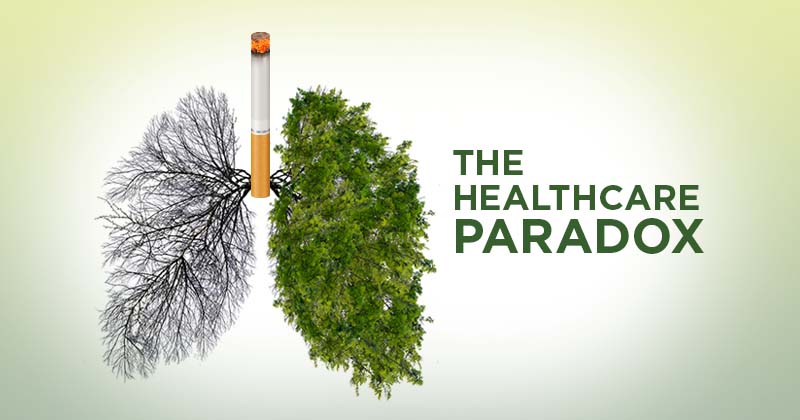© Copyright 2019. Regrow Biosciences Pvt Ltd. All Rights Reserved
Blog
© Copyright 2019. Regrow Biosciences Pvt Ltd. All Rights Reserved
Blog
THE HEALTHCARE PARADOX
20th July 2022

Tobacco smoking is one of the biggest causes of death in the world. It has caused approximately 8 million deaths every year. According to World Health Organization (WHO), 1.3 billion people around the globe have a habit of smoking regularly. In India alone, there are approximately 12 crore tobacco users- making it the second-largest country with tobacco use in the world after China [1]. The number of tobacco users has only been increasing in recent years. It is estimated that tobacco use may lead to 10 million deaths per year by 2030[2]. The main reason for the increase in prevalence is the easy availability of tobacco products in the country. They are sold to users without any age verification. Hence, the younger population also has easy access to the product even in developed countries like the USA. It is estimated that if smoking continues at the current rate among U.S. youth, it will lead to 5.6 million premature deaths of Americans younger than 18 years of age. This represents about one in every 13 Americans aged 17 years or younger today [3]. According to a survey by the National Sample Survey Organization of the Indian Government, about 20 million children between the age brackets of 10–14 are estimated to be tobacco addicted [4].
The burdens associated with the effortless reachability of harmful products like tobacco are often overlooked. There are numerous life-threatening health risks associated with tobacco products. Tobacco smoking leads to disability in almost every organ of the body. Some associated diseases include cancer, heart disease, stroke, lung diseases, diabetes, chronic obstructive pulmonary disease (COPD), tuberculosis, certain eye diseases, and even weakening of the immune system [4]. Smokeless forms of tobacco like khaini, gutkha, betel quid with tobacco, and zarda can cause white or gray patches inside the mouth Major diseases associated with tobacco (leukoplakia) can lead to cancer. Other complications include gum disease, tooth decay, and tooth loss.

To treat such debilitating diseases, researchers are continuously working toward developing new medications to protect people's lives. In recent years, thousands of clinical trials have been established to develop strategies for the prevention, diagnosis, treatment, and cure of life-threatening diseases. New-generation medicines(cell therapies, gene therapies, tissue engineering, etc.) help in efficient disease management and cure to make patients' lives normal and pain-free. The disadvantages of new-age medicines are targeted delivery, improved functionality, and regeneration of organs with minimal or zero side effects at fast healing rates. However, unlike tobacco manufacturing, not everyone has the advantage of new-age therapeutics and the freedom to rapidly manufacture therapeutic products.
A new product undergoes several clinical phases and rigid guidelines before approval. It includes extensive in-vitro tests, pre-clinical phase, clinical phases (I, II, and III), and market approval. The entire process requires huge investments and time. A new medicine launch takes up to one decade. On the contrary, the guidelines for tobacco manufacturing and selling are comparatively straightforward and easy. The vendors can acquire a tobacco license within a few months and sell the harmful product for up to 5 years before renewal. There are comparatively minimal guidelines or verifications for manufacturing or selling tobacco products in any form.
It's a paradox that the cure of deadly diseases like cancer needs more verifications than the cause. There is an urgent need to adjust the regulatory requirements for new clinical products. There are over a million patients diagnosed with life-threatening diseases in one decade. Thousands of lives can be saved with an earlier launch of therapeutic products. The government's health agency must urgently reevaluate its policies for manufacturing clinical and non-clinical products to ensure more lives are saved than harmed. This will also facilitate research and investment in emerging treatment sectors that are focused on targeting the root cause of the disease after a detailed pathophysiological analysis of the disease.
References:
1. World Health Organization, Tobacco key facts, May 24, 2020
2. Business Standard. (2021, June 2). Tobacco use may lead to 10 mn deaths annually by 2030: NICPR director.
3. CDCTobaccoFree, 2021
4. American Cancer Society, Health Risks of Smoking Tobacco, 2019